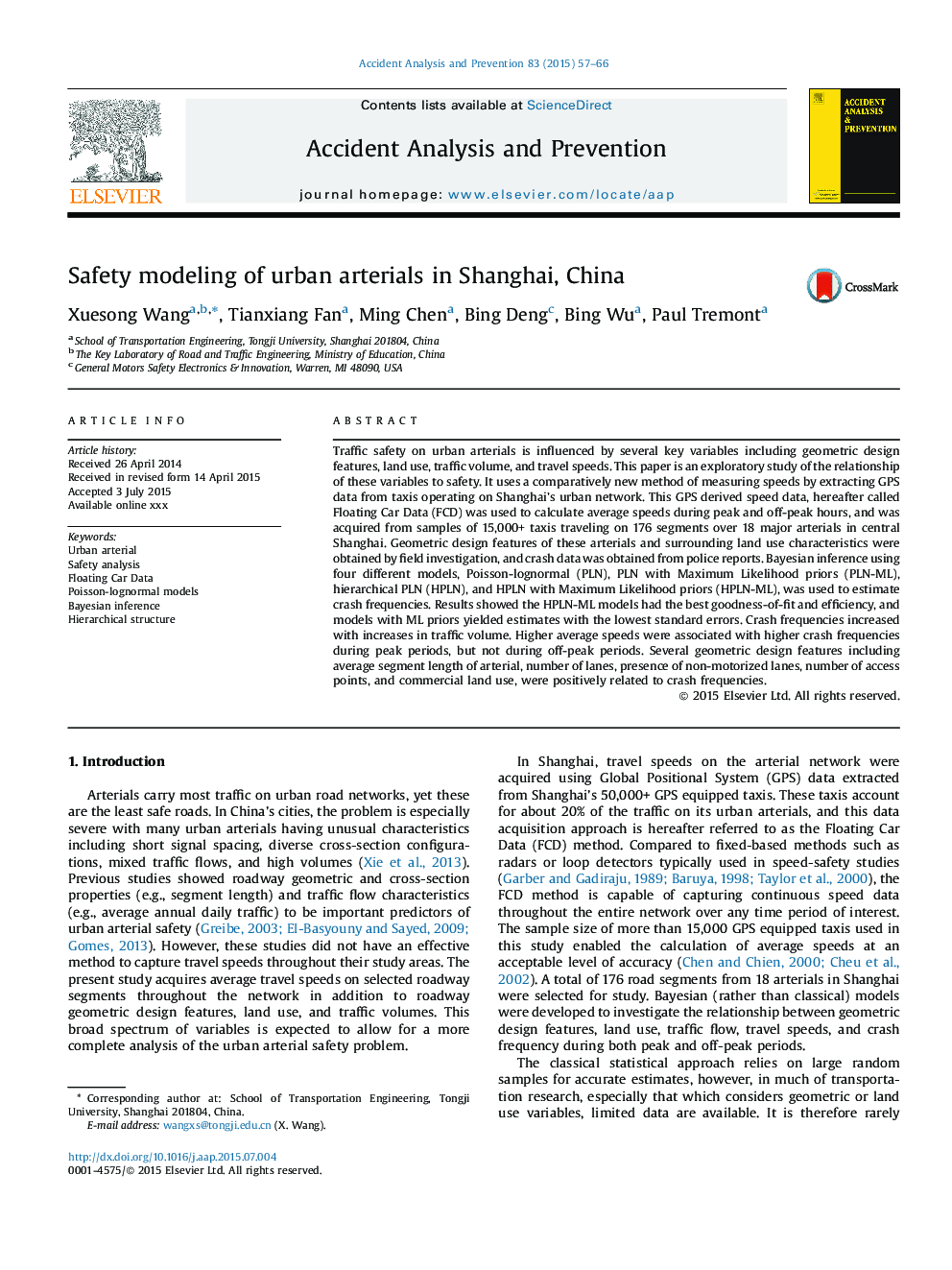| Article ID | Journal | Published Year | Pages | File Type |
|---|---|---|---|---|
| 572099 | Accident Analysis & Prevention | 2015 | 10 Pages |
Abstract
Traffic safety on urban arterials is influenced by several key variables including geometric design features, land use, traffic volume, and travel speeds. This paper is an exploratory study of the relationship of these variables to safety. It uses a comparatively new method of measuring speeds by extracting GPS data from taxis operating on Shanghai's urban network. This GPS derived speed data, hereafter called Floating Car Data (FCD) was used to calculate average speeds during peak and off-peak hours, and was acquired from samples of 15,000+ taxis traveling on 176 segments over 18 major arterials in central Shanghai. Geometric design features of these arterials and surrounding land use characteristics were obtained by field investigation, and crash data was obtained from police reports. Bayesian inference using four different models, Poisson-lognormal (PLN), PLN with Maximum Likelihood priors (PLN-ML), hierarchical PLN (HPLN), and HPLN with Maximum Likelihood priors (HPLN-ML), was used to estimate crash frequencies. Results showed the HPLN-ML models had the best goodness-of-fit and efficiency, and models with ML priors yielded estimates with the lowest standard errors. Crash frequencies increased with increases in traffic volume. Higher average speeds were associated with higher crash frequencies during peak periods, but not during off-peak periods. Several geometric design features including average segment length of arterial, number of lanes, presence of non-motorized lanes, number of access points, and commercial land use, were positively related to crash frequencies.
Related Topics
Physical Sciences and Engineering
Chemical Engineering
Chemical Health and Safety
Authors
Xuesong Wang, Tianxiang Fan, Ming Chen, Bing Deng, Bing Wu, Paul Tremont,
